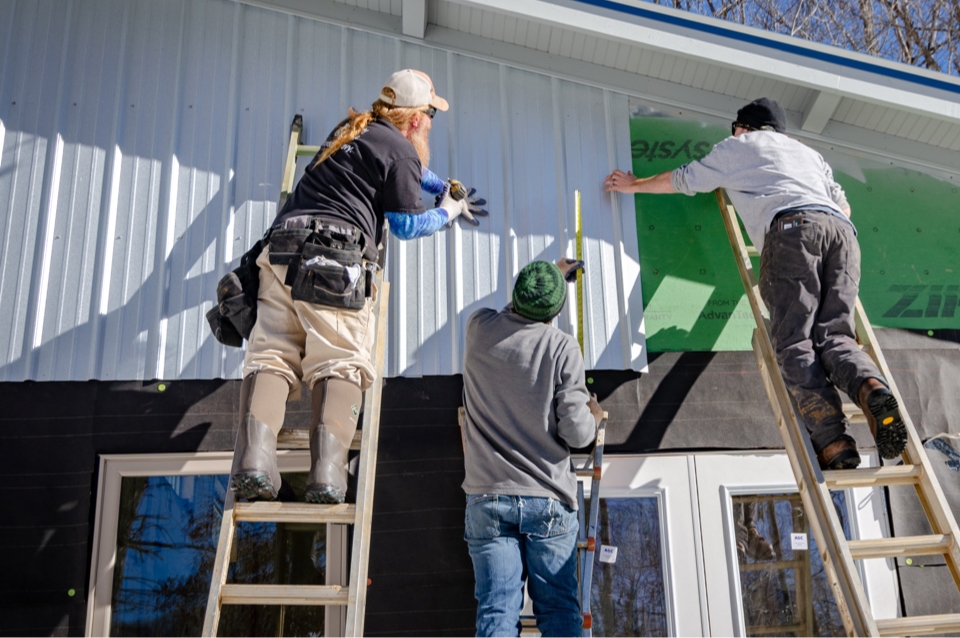Businesses can gain a lot from taking on an apprentice. With an apprentice on your team, you’re doing more than just training the next generation of tradespeople. There are many benefits to having an apprentice on site, including fresh perspectives, a boost in workplace culture, and of course, cost-effective labour.
But there are also some serious considerations to take into account before hiring an apprentice. It’s not simply a way to get cheap labour—you also have to take responsibility to train and further your apprentices’ learning.
If you’re thinking of taking on a Certificate III in Carpentry apprentice, here’s all that you need to know about how it works and how to ensure that your business is ready to offer the best apprenticeships in Australia.
Block Release vs On-The-Job Training
The first step is doing some research to decide the style of training which best suits your current business model. Many TAFE building and construction courses require apprentices be allowed time off to attend their study commitments. It might be a day, a week, or a month when your apprentice is not able to work onsite. For some, study commitments might require travel time and accommodation if their building and construction courses institution is far away. If you choose this route, make sure you talk to your apprentice upfront about the time off they require, so that there are no surprises down the track for you.
If you’d prefer to have your apprentice on site every day, then you might consider alternative institutions that are more flexible to the needs of your building projects. CWBTS, for example, enables apprentices to complete all of their coursework on the job—meaning no absenteeism for you, and fewer disruptions to your day-to-day workflow. What’s more, we’re known to deliver some of the best apprenticeships in Australia.

Consider Who’s the Right Mentor
A carpentry apprentice/mentor relationship is a two way street. While you’ll surely want to find the right fit for your business, potential apprentices will be looking for someone who is knowledgeable in their field, and willing to take someone new under their wing while they study their Certificate III in Carpentry. This relationship will mean taking time out of your day to supervise, guide and support your apprentice, even helping them figure out what potential career options are open to them.
Being a good mentor is about so much more than having someone watch you while you work. If you do it right, you’ll be rewarded with a hardworking, loyal and highly skilled graduate who is well placed to grow your business. Building and construction courses can only teach so much—at the heart of any bright young apprentice is a great mentor. Which is why CWBTS will offer you or your nominated mentor apprenticeship support to ensure the success of your apprentice.
Go Through the Paperwork and Obligations
If this is your first Carpentry apprentice, then it will pay to do some research and make sure you know your obligations around wages, pay-slips, and rights around leave and termination. How about tax, super, and WH&S? Like your employees, apprentices need to be covered by your duty of care. The good news is that there is plenty of apprenticeship support in Australia and at CWBTS. Check out FairWork’s Guide to taking on an apprentice for more information.
Advertise Your Role
Now that you’re ready to take someone on, advertise your role on online job boards and social media. Ensure you note that you’re looking for Certificate III in Carpentry applicants. The clearer you are on the requirements and what you can offer your carpentry apprentice, the better. Write a letter of offer, and make sure to give them a good introduction to the workplace. By doing all of these things, you’re ensuring that day one with your new apprentice can go off without a hitch.
If you’re too busy to advertise and interview lots of applicants, CWBTS offers an end-to-end recruitment service at no cost and can place the right carpentry apprentice in your business. Contact us to find out more.
Find Varied Work for Them
An important part of any apprenticeship is finding the right balance between work and learning, and for an employer, this can often be a tricky task. There needs to be enough work—and varied work—to not only keep them busy but to teach them all the skills they need to complete their apprenticeship. On the flip side, too much work and you might let their learning slip down the priority list. For apprenticeships to work, both parties need to put in the time and effort.
Be Open Minded
For a Certificate III in Carpentry apprenticeship to be successful, not just for your apprenticeship but for you and your business, the working environment needs to be a productive, supportive place. While you will help impart your wisdom on your apprentice, it’s always good to listen to what they have to say, and see if there are any improvements you can make. Resist the temptation to brush them off, and a mutually beneficial experience will form. Remember, apprentices are students currently studying building and construction courses. This means they have access to best-practice building and construction learnings that could help grow your business.
Looking to bring on a carpentry apprentice? Contact our team at 1300 4 CWBTS, or get in touch online here.





